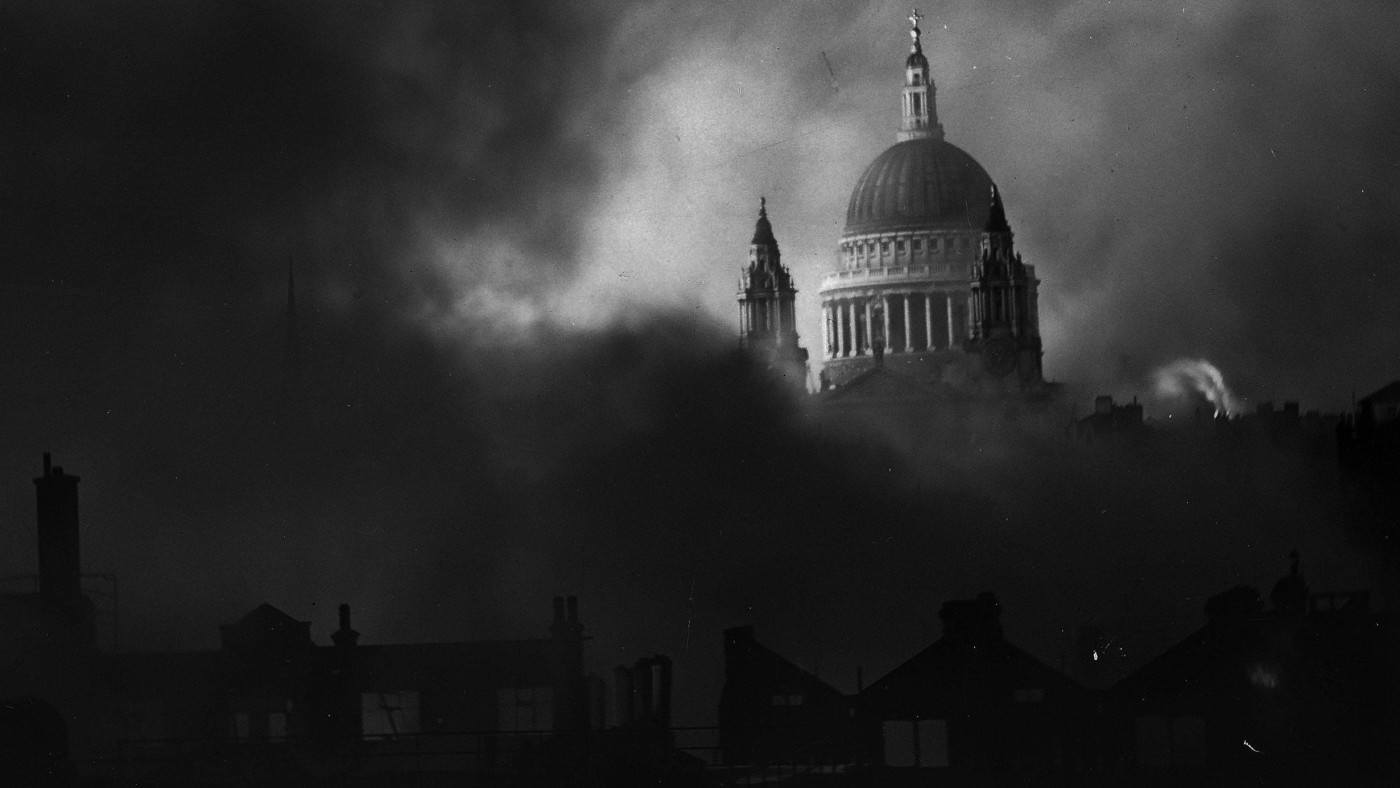On the night of 29th December 1940, seventy five years ago today, the newspaper photographer Herbert Mason was working in Fleet Street on what was to prove the heaviest night of the Blitz. In a few hours the Luftwaffe poured more than 24,000 high explosive bombs and 100,000 incendiaries onto the City of London and surrounding areas, causing destruction on such a scale that the event became known as the Second Great Fire of London. As many as 160 civilians were killed and the damage to the fabric of the historic City took decades to repair in full.
Mercifully, thanks to the efforts of volunteers on duty on the rooftops of the Cathedral, Wren’s St. Paul’s somehow survived the night. And Herbert Mason was there to record the scene, taking a picture that symbolised Britain’s defiance in the face of Nazi tyranny.
M.J. Gaskin’s book about that night – pieced together from eyewitness accounts and diaries of firefighters, workers, and civilians – cannot be recommended enough. At every available opportunity I advise people to buy it.
She describes how the photographer walked from Fleet Street, then home to much of Britain’s newspaper industry, the short distance up Ludgate Hill, which was carpeted with hosepipes. The firemen battled on bravely despite having a pathetically small amount of water. Mason took some pictures and then turned around.
“He went back to the office and up to the roof of the Daily Mail building. And there, in the small hours of the morning, as he watched the wider panorama, he recalled: ‘The smoke parted like the curtain of theatre and there before me was this wonderful vista, more like a dream, not frightening.’ Against the flames, Wren’s famous dome of St Paul’s stood silhouetted and, almost miraculously, unscathed. Mason saw the light gleam on the golden cross above and, at the perfect instant, clicked the shutter.”
Five years ago, on the 70th anniversary of the Second Great Fire of London, I wrote a short piece for the Wall Street Journal, which in those days had an office overlooking the Cathedral. Putting to one side that it feels like five minutes ago, not five years ago, the image of St Paul’s has an even greater resonance today than it did in 2010.
Those who seek to destroy the West, ISIS and similar groups, do not have access to aircraft that can heap high explosives on our heads, although they would use anything they could get their hands on given half a chance. Instead, they heap misery on those they capture and enslave in Syria, Iraq and beyond, and send radicalised young men to the West to kill innocent people who have done nothing more provocative than go out to a restaurant or a theatre for the evening. Contemplating the havoc the terrorists have caused, it has been tempting at various points in the last year – after the Paris attacks in particular – to fear that they are getting the better of us. It is not the case. Yes, there will be more setbacks, just as there were after 1940. But the nihilists won’t win, any more than the Nazis did.
Just as in 1940, the quiet determination of millions, tens of millions of people, to live happily in peace and prosperity will prove more than a match for those who hate freedom.


